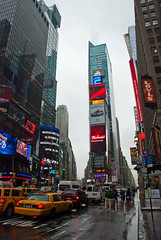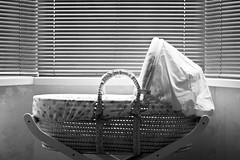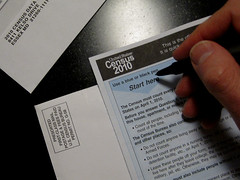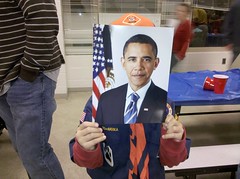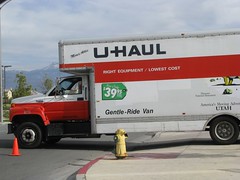 Recent data released by the Census Bureau have sociologists and demographers abuzz about mobility in the U.S. The Christian Science Monitor reports:
Recent data released by the Census Bureau have sociologists and demographers abuzz about mobility in the U.S. The Christian Science Monitor reports:
Americans are moving again, following a recession-induced plunge in mobility. But the mobility rate is still at historic lows as housing costs and few job opportunities keep many Americans hunkered down.
Some 37.1 million Americans, or 12.5 percent of the population, moved in 2009, according to the Census Bureau. That’s up – barely – from 11.9 percent the previous year, the lowest the US mobility rate has been since the Bureau began tracking it in 1948.
A normal rate during good economic times, such as in the 1990s, is between 15 and 17 percent.
A sociologist comments:
“What the [recession] has done is frozen people in place,” says Kenneth Johnson, a senior demographer at the Carsey Institute and a professor of sociology at the University of New Hampshire in Durham. “I’ve never seen changes of this magnitude in so short a period: It’s stunning for demographers.”
Another expert weighs in on the economic effects of lower mobility:
But the fact that the mobility rate is still very low is bad news for the economy, says Richard Florida, professor of US urban theory at the University of Toronto.
“Mobility is the cornerstone of the American economic backbone,” says Professor Florida, author of the new book “The Great Reset.” “Our economy has been premised on flexibility and mobility. Our workforce has always better able to move to where jobs and opportunities are.”
One demographer explains why local vs. long-distance moves might be problematic:
“It’s not good news,” says William Frey, chief demographer at the Brookings Institution in Washington. “It only ticked up for local moves, not long-distance moves. I think the latter is a more significant story than the former – more college-educated people, more young people trying to move up in their careers. They are the lifeblood of migration and growth.”
Another concerning although consistent trend: People with incomes below the poverty line were more likely to move locally – and less likely to make long-distance moves – than others.
But experts see at least some positives of lower mobility:
Moving tends to take a toll on people. Staying put, by contrast, reaps social benefits like stronger family and community connections. Communities with lower levels of mobility tend to enjoy higher levels of trust and well-being, Mr. Frey says.
“People have their kids around them longer. There’s a stronger sense of community, but you’d like to think that would happen more for voluntary reasons,” he says.

